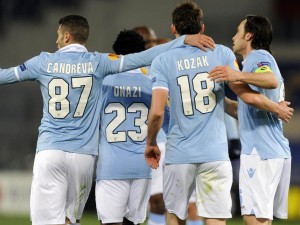I’m just back home after belting a Garlic Roast Dose at Rameshwaram Cafe. This was the first time I went there, though you may not believe that since I’ve already written an entire blogpost on “Hosur cuisine”. Having eaten there once, I’m not sure I’ll describe Rameshwaram Cafe as “Hosur cuisine” any more. I’d instead call it “netflix cuisine”.
A few years back, when Netflix started making its originals, there were a bunch of articles and blogposts on how Netflix “used data and machine learning to craft its shows”. If you look at the trajectory of Netflix, initially that was novel and people loved its shows. Over a period of time, that didn’t scale, since it led to a whole bunch of “premium mediocre” shows.
Oh, on this note, you should read this article on how “everything is becoming the same“. And more AI and ML might just accelerate the trend.
Back to Rameshwaram. We were in the middle of our breakfasts, wife having “ghee pudi masala dose” and me having “garlic roast dose” (basically the same thing, except that my dose had Bangalore-style red garlic chutney smeared in, while wife’s had Tamil-style chutney puDi).
Someone wearing the Rameshwaram Cafe uniform approached us with the pickup line of “you guys come here often right?”. We replied that it’s our first time there, and he proceeded to ask us how we found it.
“Dose is fine but I don’t like the sambar”, I started off. “Yes, that’s because we make the sambar in Tamil style. You must like the Kannada style sambar, but we don’t make that here”, he said. We chitchatted for another minute when I excused myself to go get a second helping of chutney (yes, the initial quantity of chutney served there is grossly inefficient).
Essentially, Rameshwaram Cafe is the application of data and analytics and ML to restaurant menu building. Everything here is a conscious choice. The idli, vaDe and sambar are Tamil-style (thankfully the menu board said “40 rupees for a pair“, so I figured it must be tithi vaDe and stayed away from it). The dose is Bangalore style. Chutney taste is in between, but served Tamil style (small quantities of multiple varieties). I half expected to be turned away when I asked for extra chutney but most of the staff speaks Kannada, so they empathised.
The coffee was good. I didn’t really feel like having anything else – the iDli and vaDe on others’ plates didn’t look appetising at all. And so we came home.
Will we go back? It will depend on the circumstance. This will NEVER be everyday food like the nearby SN is for us. The dose was good while I ate it, but I don’t like the aftertaste. It’s not a place I would avoid (like if it were on a highway, or if I needed to eat at midnight when no other darshinis are open, I would go). However, it’s not a place I would seek out and go.
And the more I think about it, the more “premium mediocre” it is. Because they seem to have used data and analytics to find their menu (some items Bangalore style and some Tamil style – and it seems to be a very deliberate choice), the food by definition will not be spectacular. However, the place is hygienic, has pretty good operations and does well on the business aspects, so it is “premium”. And will continue to do well – just that I won’t go there too often.
“This has never happened to me”, my wife said as we were walking out. “I’ve never seen the restaurant manager at a place like this take customer feedback. And that feels odd. Places like this are supposed to be like ‘this is what we make. take it or leave it'”. Then again, she has never been a fan of fusion cuisines.






